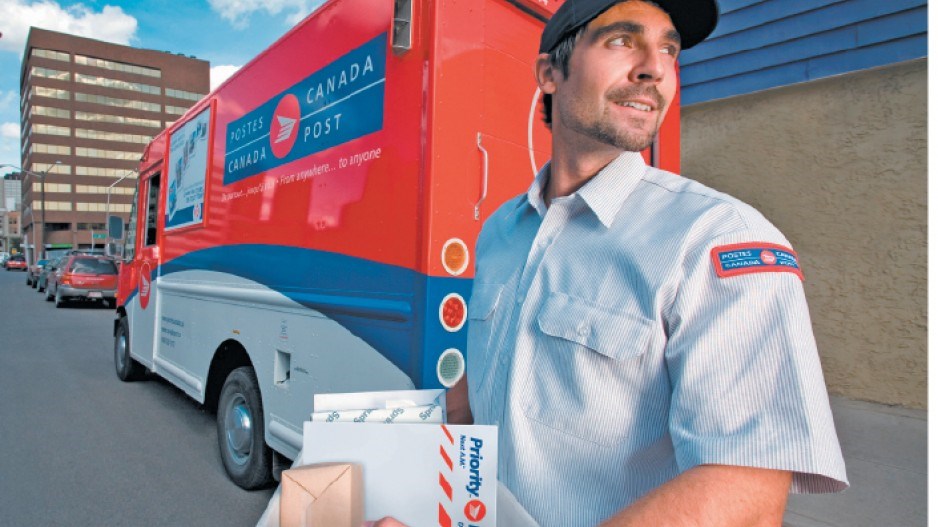Some time between now and 2020, Canadians will likely say goodbye to their friendly neighbourhood mail carrier.
Replacing door-to-door mail delivery with community mailboxes, already common in rural areas, is just one of the changes the national mail service is contemplating as it faces a grim financial future. To prepare for that bleak outlook, Canada Post commissioned a report from the Conference Board of Canada, which was released in April 2013.
The Crown corporation is now following up on that report with a series of community meetings across Canada. Last week, Canada Post executives touched down in Vancouver. The federal government will also hold its own series of consultation sessions before any decisions on Canada Post's future are made.
"If we continue on the path we're on, by 2020 we will lose a billion dollars a year," Mike Shearon, general manager of Canada Post's operations in Western Canada, told Business in Vancouver.
"We do not want to be a burden on taxpayers."
Canada Post faces a multitude of challenges to its traditional business model. With the rise in electronic communications, letter mail in Canada fell by a billion pieces between 2006 and 2012. At the same time, the number of parcels it processes has grown in part because Canadians are shopping online more often.
But processing letter mail is easier and cheaper to run through mail sorting machines; packages, with their different sizes and weights, are more expensive to handle. To sort parcels more efficiently, Canada Post has spent $1 billion to update its equipment.
"Here in Vancouver, we're the gateway to Asia, and we've really seen an increase in parcels and packages," Shearon said. "We're up 30% here in Vancouver in the volume of parcels and packages that we're receiving."
Canadians are surprisingly realistic about the difficulties Canada Post faces, said David Stewart-Patterson, the conference board's vice-president of public policy and one of the report's authors. Canadians surveyed for the report placed more emphasis on reliability and trust and less on speed and cost.
He said that's a turnaround from previous eras.
Shearon added that the Canadians he's been meeting acknowledge big changes need to be made.
"A lot of have people said: 'It's not which [option] you choose, it's when you will implement all of them.'"
That's not to say that the national mail carrier will cease to be important to Canada's economy.
Small-business owners continue to rely heavily on letter mail to send invoices and get payment: "'The cheque is in the mail' works," Stewart-Patterson noted.
Online shopping is an area Canada Post has targeted for growth. On September 5, the Crown corporation unveiled a new red shopping cart logo and advertising campaign in an effort to position itself as a leader among e-commerce shippers.
That's the one area where mail volumes are growing, but Stewart-Patterson said it's a competitive space.
He believes that, with its reputation for reliability and its reach to every address in the country, Canada Post can compete.
"We will position ourselves as the low-cost alternative," Shearon said of Canada Post's e-commerce plans.
"We won't be the one to get it there by 10 a.m. tomorrow, but there's a lot of people, if the price is right and you have some confidence about when it's going to arrive, then we will be the choice you make." •
- Annual price hikes on letters, admail and parcels between 5% and 10%, higher than the current rate of increase
"Canadians recognize the current price of a stamp as providing good value, and ... residential and small-business customers would be prepared to accept some degree of higher pricing."
- Wage freeze
"Even temporary wage restraint has significant risks."
- Alternate day delivery for residential customers
"There likely would be serious pushback from major [ad] mailers."
- Eliminate door-to-door service for residential customers
"Door-to-door delivery is, by far, the most expensive delivery method."
- Continue to shift postal offices to franchised retail outlets
"In urban areas, Canada Post's average cost per dollar of retail sales using a dealer is about one-third of that using a corporate outlet."
Source: Conference Board of Canada report "The Future of Postal Service in Canada"




